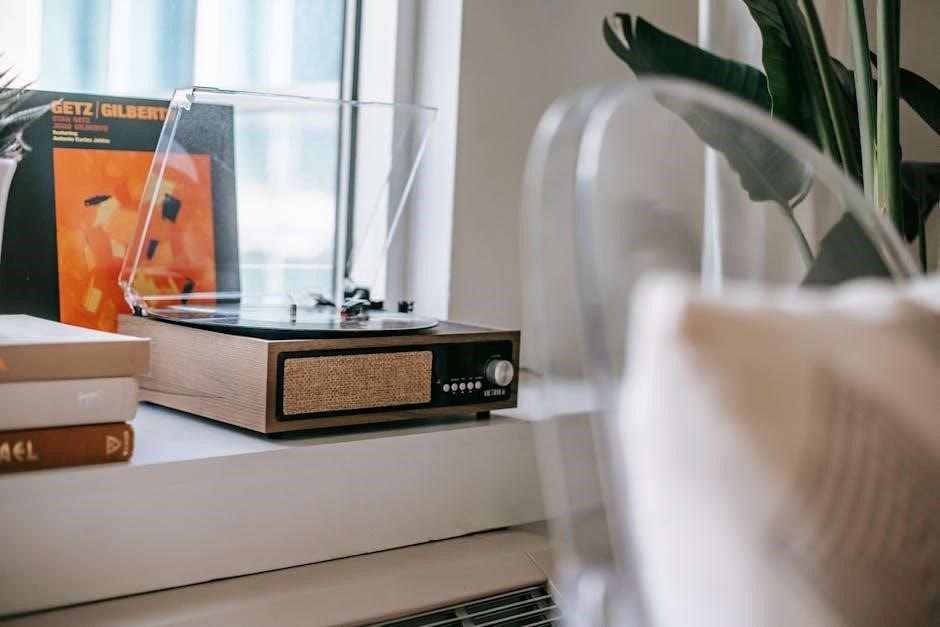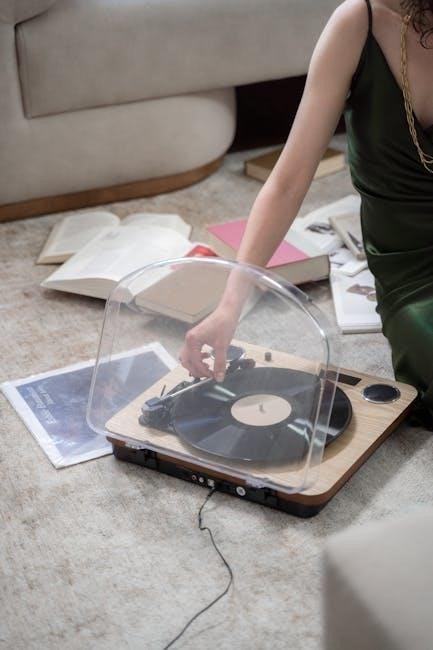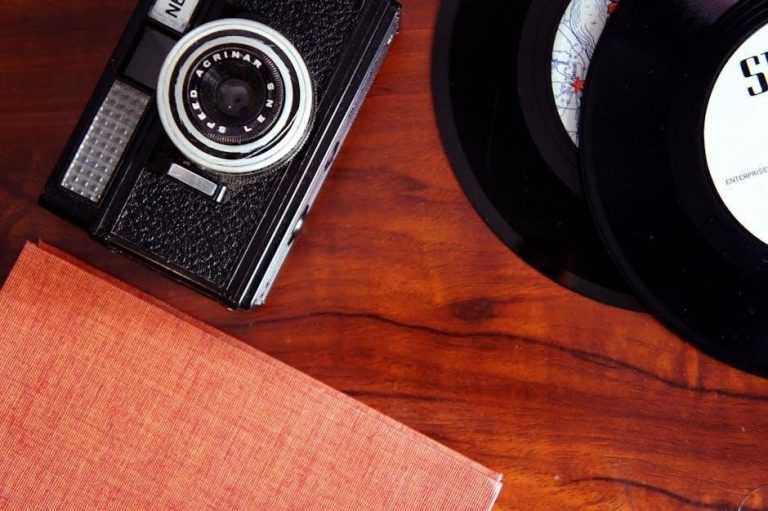Recording the Beatles by Kevin Ryan and Brian Kehew is a detailed guide to the studio equipment and techniques used during the Beatles’ iconic recordings.
Overview of the Book’s Significance
Recording the Beatles is a comprehensive guide detailing the studio techniques and equipment used during the Beatles’ iconic recording sessions at Abbey Road. This book is a vital resource for audio engineers, historians, and fans, offering deep insights into the technical and creative processes behind their music. Its detailed documentation of every session, along with rare photos, makes it a cornerstone of Beatles historiography. The book’s significance lies in its meticulous research and its role as a primary source for understanding the evolution of recording technology and the Beatles’ innovative practices.
Authors Kevin Ryan and Brian Kehew
Kevin Ryan and Brian Kehew are renowned experts in audio engineering and music history. Their collaboration on Recording the Beatles showcases their deep knowledge of the Beatles’ studio practices. Ryan’s expertise in vintage recording equipment and Kehew’s insights into the band’s creative processes make this book a definitive resource. Published in 2006, their work has become a cornerstone for understanding the technical and artistic evolution of the Beatles’ recordings, offering unparalleled detail for engineers, historians, and fans alike.

The Beatles’ Recording Sessions
The Beatles’ recording sessions spanned over a decade, capturing their evolution from Love Me Do to Abbey Road, with historic studios like Abbey Road playing a pivotal role.
Abbey Road Studio’s Role
Abbey Road Studio was the epicenter of the Beatles’ recording journey, providing cutting-edge technology and a creative environment. The studio’s EMI TG12345 console and expert engineers enabled groundbreaking innovations. Mark Lewisohn’s documentation highlights Abbey Road’s significance, while Brian Kehew’s insights reveal its technical prowess. The studio’s versatile spaces, from Studio 2 to the control rooms, witnessed the evolution of the Beatles’ sound, making it an inseparable part of their legacy and a cornerstone of music history.
Key Equipment and Techniques
The Beatles’ recordings relied on groundbreaking equipment and techniques. Abbey Road’s EMI TG12345 console, tape loops, and Leslie speakers were instrumental. Multi-track recording allowed layering, while reverse tapes and varispeed created unique effects. These tools, combined with innovative studio tricks, defined their sound. The book details how these technologies were pivotal in shaping their iconic albums, showcasing the interplay between technical innovation and creative genius.

Historical Context and Evolution
Recording the Beatles chronicles the evolution of studio techniques, from early tapes to Abbey Road innovations, highlighting the Beatles’ artistic vision and technical advancements over time.
Early Recordings and Studio Innovations
The Beatles’ early recordings reveal the foundation of their sound, shaped by rudimentary equipment and pioneering techniques at Abbey Road. Recording the Beatles details how these sessions laid the groundwork for future innovations. From tape loops to overdubbing, the book explores the studio experiments that defined their evolution. These early innovations not only influenced the Beatles’ music but also set new standards for the recording industry as a whole.
Impact of Studio Equipment on Their Sound
The Beatles’ sound was profoundly shaped by the studio equipment available at Abbey Road. Recording the Beatles highlights how tools like the EMI TG12345 console and early tape machines influenced their music. Multi-track recorders enabled layering, while custom-built gear allowed unprecedented creativity. These innovations empowered the Beatles to experiment, resulting in groundbreaking albums like Sgt. Pepper’s Lonely Hearts Club Band. The book details how studio technology became an integral instrument in their artistic evolution and enduring legacy.

Notable Albums and Their Recording Processes
Sgt. Pepper’s Lonely Hearts Club Band revolutionized music production with its innovative techniques. The Beatles’ albums, including American releases, showcased evolving studio methods and creative experimentation, shaping their legacy.
Sgt. Pepper’s Lonely Hearts Club Band
Sgt. Pepper’s Lonely Hearts Club Band marked a groundbreaking era in the Beatles’ discography. Released in 1967, this album was a masterpiece of studio innovation, featuring layered recordings, orchestral arrangements, and experimental techniques. The album’s conceptual depth and artistic vision were made possible by the advanced equipment at Abbey Road Studios, as detailed in Recording the Beatles. This iconic work remains a benchmark in music production, influencing generations of artists and producers.
American Releases and Their Differences
American releases of the Beatles’ albums often differed from their UK counterparts due to differing market strategies and track listings. For instance, albums like A Hard Day’s Night had unique versions for the U.S. market. These variations highlight the complex recording and distribution processes explored in Recording the Beatles book, offering insights into how the band’s music was tailored for different audiences, influencing their global appeal and legacy.

Mark Lewisohn’s Contribution
Mark Lewisohn’s definitive guides provide unparalleled insights into the Beatles’ recording sessions, utilizing EMI’s unpublished documentation to offer a meticulous exploration of their studio work and legacy.
His Comprehensive Guides
Mark Lewisohn’s work provides an exhaustive examination of the Beatles’ recording sessions, offering detailed accounts of their creative process and technical innovations. His access to EMI’s unpublished documentation ensures unparalleled accuracy, making his guides indispensable for researchers and fans alike. These comprehensive resources chronicle every session at Abbey Road, revealing the intricacies behind their iconic recordings and cementing his reputation as a leading authority on the Beatles’ studio legacy.
Connection to “Recording the Beatles” Book
Mark Lewisohn’s meticulous documentation complements Recording the Beatles, offering a detailed narrative of the band’s studio sessions. His work aligns with the book’s focus on equipment and techniques, providing context to the technical aspects discussed. Together, they form a complete resource, blending historical and technical insights to offer a profound understanding of the Beatles’ recording journey. This connection ensures that both sources remain essential for anyone studying their artistic and technical achievements.

Availability of the Book in PDF Format
The Recording the Beatles book in PDF format is highly sought after but not freely available. Purchasing the hardcover ensures access to its comprehensive content legally.
Challenges in Finding a Free PDF
Locating a free PDF of Recording the Beatles is difficult due to its popularity and copyright protections. While related guides exist, the exact book remains scarce online. Many searches yield unrelated documents or require purchase. Fans and researchers often express frustration, as free versions are rare. The book’s detailed content and historical significance make it a valuable resource, but accessing it legally typically requires purchasing the hardcover or digital edition from authorized sellers.
Importance of Purchasing Legitimate Copies
Purchasing legitimate copies of Recording the Beatles ensures high-quality content and supports the authors’ efforts. Illegal downloads often lack the book’s full detail and may contain errors. By buying officially, readers gain access to the complete, meticulously researched material. This also respects the intellectual property of Kevin Ryan and Brian Kehew. The book’s historical significance and technical depth make it a worthwhile investment for Beatles enthusiasts and audio engineers seeking authentic, authoritative insights into their recording legacy.

Rare and Unreleased Recordings
The book highlights rare recordings, including early live tapes, offering unique insights into the Beatles’ creative process and historical significance of their unreleased material.
Early Live Tapes and Their Significance
A 60-year-old recording of the Beatles’ 1963 performance at Stowe boarding school, their earliest known full live concert in the UK, has resurfaced. Captured by a schoolboy, this tape offers rare insights into their early live performances. Such recordings are invaluable for historians and fans, providing a glimpse into the band’s raw energy and stage presence before fame. These tapes are a testament to their evolving artistry and remain a cherished part of their legacy.
The Value of Historical Recordings
Historical recordings, like the Beatles’ earliest live tapes, are invaluable for understanding their artistic evolution. These rare recordings, such as their 1963 Stowe performance, provide unique insights into their early live energy and stage presence. Preserving these recordings ensures future generations can study their development and contributions to music history. Such documents are not just relics but living chronicles of the Beatles’ journey, offering unparalleled authenticity and depth to their enduring legacy.
Recording the Beatles offers a profound exploration of the band’s studio journey, detailing equipment, techniques, and sessions. It remains a vital resource for audio engineers and Beatles enthusiasts alike.
The Book’s Legacy and Influence
Recording the Beatles has become a cornerstone in music production literature, inspiring audio engineers and historians. Its meticulous documentation of the Beatles’ studio practices continues to educate professionals and fans, preserving the band’s technical and artistic achievements for future generations. The book’s influence extends beyond its pages, fostering a deeper appreciation for the innovative recording techniques that shaped some of the most iconic music in history. Its legacy endures as an essential reference for understanding the Beatles’ enduring impact on sound and studio craft.
Final Thoughts on The Beatles’ Recording Journey
The Beatles’ recording journey remains a testament to their artistic vision and technical innovation. From early sessions at Abbey Road to the groundbreaking techniques of Sgt. Pepper’s, their work continues to inspire. Recording the Beatles captures this legacy, offering insights into the equipment and methods that shaped their sound; As a resource, it ensures their creative process remains accessible, enriching both scholars and enthusiasts. Their journey, documented in this book, solidifies their place as pioneers in music production, leaving an indelible mark on the industry.
